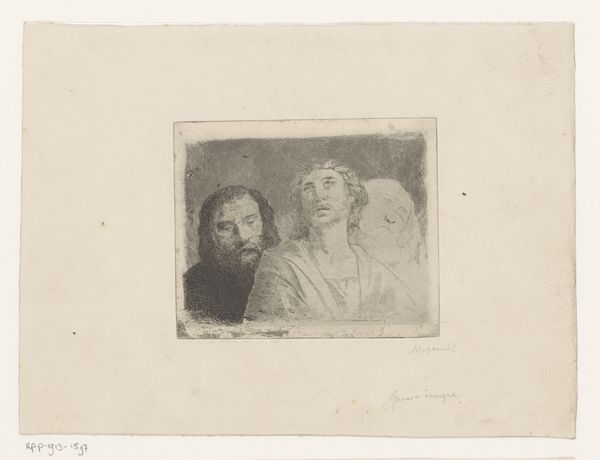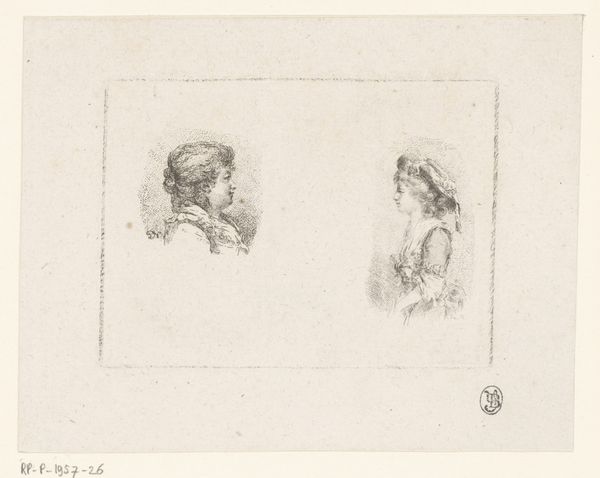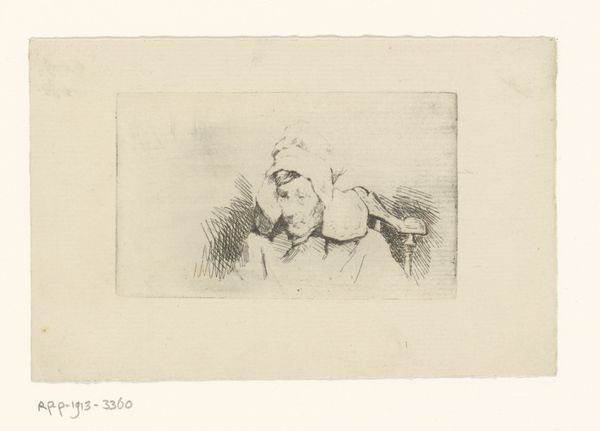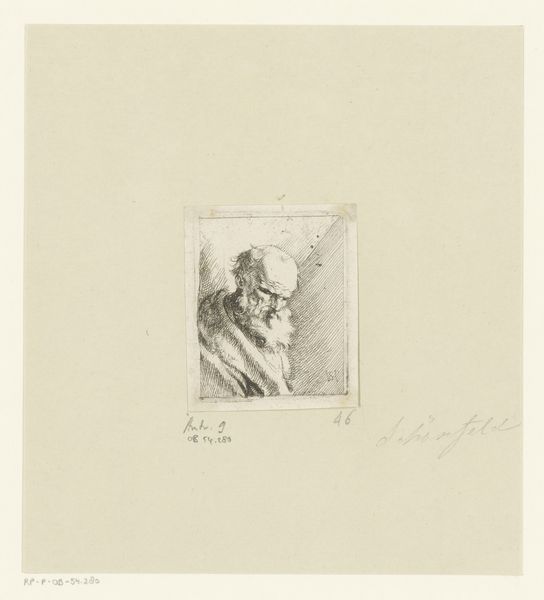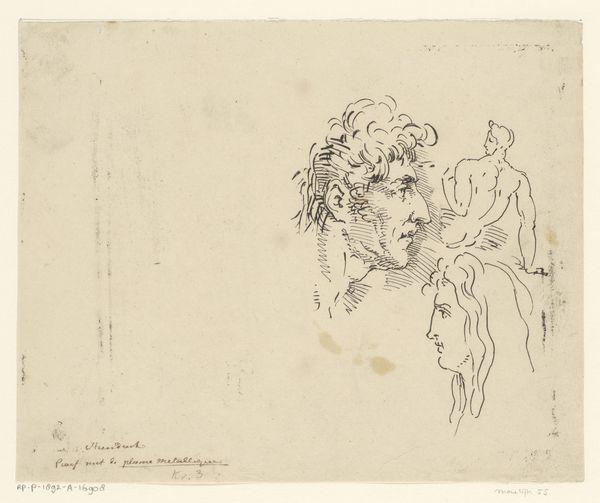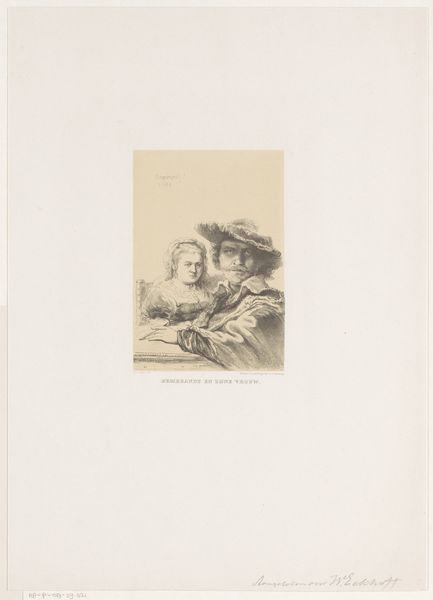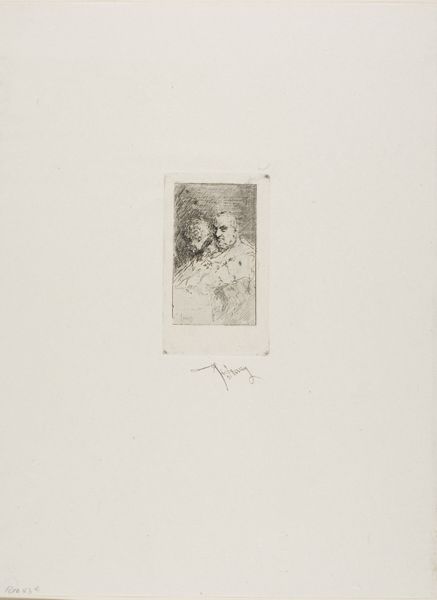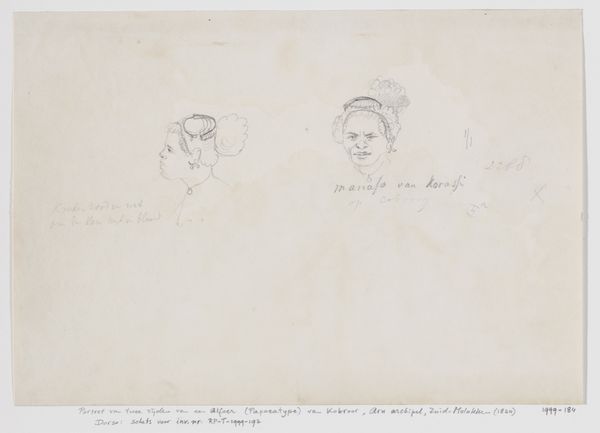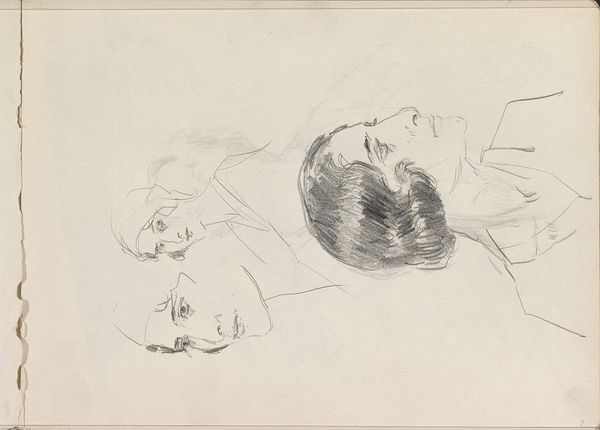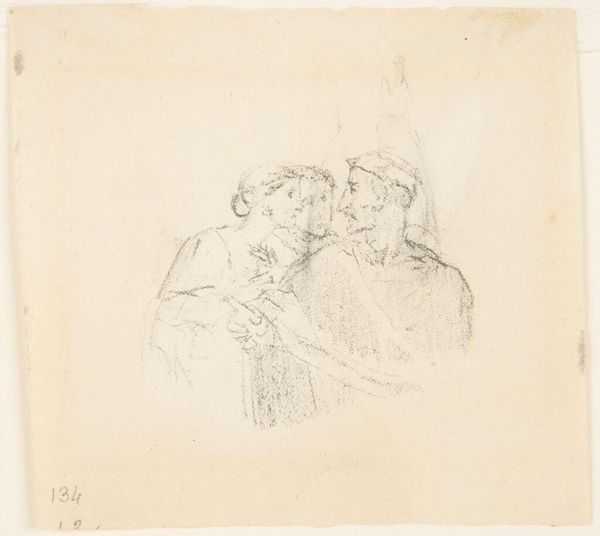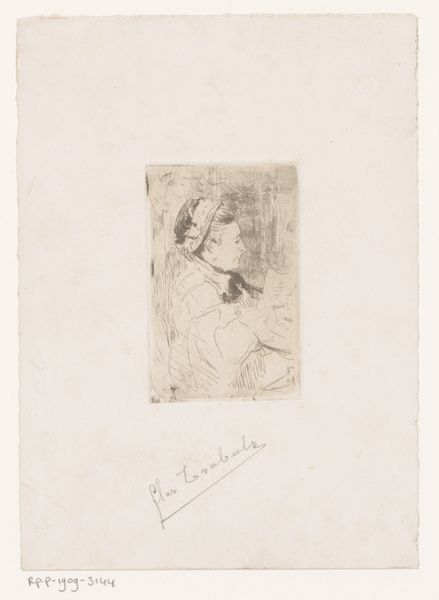
print, etching
#
portrait
# print
#
etching
#
old engraving style
#
figuration
#
personal sketchbook
#
history-painting
#
academic-art
Dimensions: height 100 mm, width 119 mm
Copyright: Rijks Museum: Open Domain
Joseph Meganck created this print, Studie van Christus met twee figuren, using the etching process. In this method, a metal plate is coated with a waxy ground, then scratched with a needle to expose the metal. The plate is then immersed in acid, which bites into the exposed lines, creating an image that can be inked and printed. The etched lines give the study its distinctive character. Notice how Meganck varies the density of the lines to create shadows and volume. The technique lends itself well to capturing the texture of the figures' hair and clothing. Printmaking processes like etching played a crucial role in the democratization of art, making images more accessible to a wider audience than unique paintings or sculptures. They also involved a division of labor: the artist creates the image, but skilled printers are needed to produce the final product. This division reflects the broader economic shifts of the industrial era, where specialized labor became increasingly common. Understanding these material and social contexts helps us appreciate the full significance of Meganck's print.
Comments
No comments
Be the first to comment and join the conversation on the ultimate creative platform.
